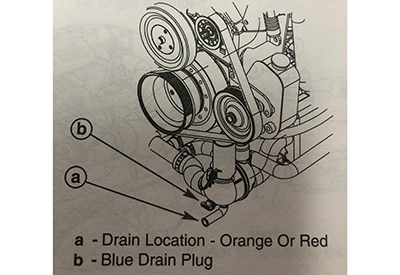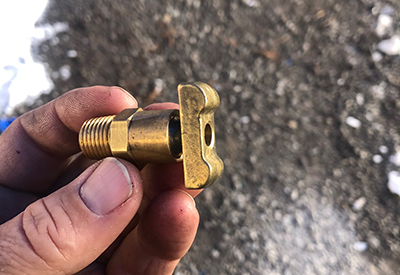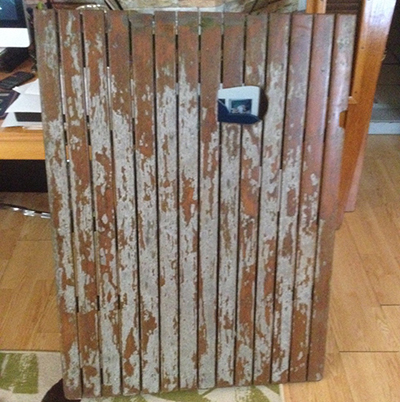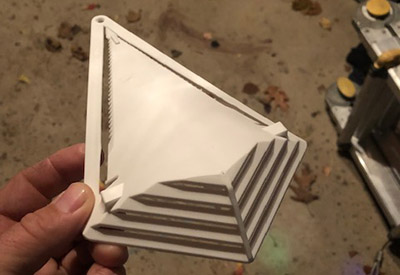Ask Andrew: Winterizing! What if you’ve missed the boat?

Nov 21, 2019
A page from an engine manual showing the location of drain plugs
Sometimes life gets in the way of boating. A summer wedding, family get-together, or (heaven forbid) work forces you to cancel a weekend on the water.
As summer turns to fall, the excuses tend to get easier. Boat priorities tend to fall further and further down the to-do list. Before you know it, it’s the second week of November, and the first frost (or freeze) of the season has come and gone. But, because boating priorities became less important, you forgot to get your boat winterized.
This is when marine mechanics and service providers like myself tend to receive a number of panicked phone calls. Some calls are from new boaters who simply didn’t know the why and how of winterization. Others are from folks who didn’t realize that they’d run out of time. For whatever the reason, it’s a worrisome predicament to be in. Lets break it down and see how to mitigate the risk of damage.
 A brass drain plug common to may mercrusier, OMC and Volvo engine’s
A brass drain plug common to may mercrusier, OMC and Volvo engine’s
The winterizing processes and procedures can be broken down into two main categories:
1) Preparing the boat’s systems for long-term storage (this includes the engine, generator, batteries, fresh water system, waste system, electrical system, air conditioner, heaters, propane and stoves)
2) Removing water from any/all systems to prevent any freezing damage. When water freezes, it expands. The force of expansion can easily burst water tanks, water lines, faucets, toilets, waste tanks, engine blocks, exhaust manifolds and mufflers.
The panic that is seen when we’ve left winterizing until too late in the season it usually related more to the concern of freezing damage. Once temperatures drop below freezing (even for one day or night), damage may occur. That said, damage can’t be fully known until the engine is run, or water system is pressurized. At this point, some boat owners will be left with a pit in their stomach until the spring. Others will frantically seek out a marine tech who can winterize their boat (and some may refuse due to assumed liability, or simply because temperatures have dropped too far to allow them to do much.)
So what can you do?
 The blue plug and hoses should be removed and drained
The blue plug and hoses should be removed and drained
First – drain the water. If the water is frozen, remove drain plugs, and create breaks that will allow water to expand without causing damage.
Outboard engines are generally self-draining, but should be trimmed down as far as possible to allow water to escape from the pick-ups and the propeller hub.
Inboard Engine blocks, exhaust manifolds and mufflers each have drain plugs that can be removed. If in doubt on where there are located, consult your engine manual. Most will have clear diagrams showing the drain points.
For the water system, empty water and waste tanks (if possible), and fun the water pressure pump in order to force any water in the lines to the faucets. Open the faucets and allow them to drain. If the water in the lines is frozen, then leave faucets open, and loosen any easily accessible fittings and connections so that water can escape as temperatures fluctuate. Don’t forget to drain the bilge and any livewells.
Drain any/all seawater strainers and engine mufflers
Next – remove engine hoses from the thermostat housing (usually accessible at the top and front of the engine. Bend the rubber hoses downward to allow any water to drain.
Then – add antifreeze where possible. If temperatures are too cold to allow any water to drain, try running heaters in your engine spaces. Otherwise, keep a close eye on temperatures and find a day that is above zero. Pour antifreeze into each of the engine hoses until you see it draining from the block or manifold drain. Fill strainers with antifreeze. Pour antifreeze into the water tank, or use a pump to force it through the water lines. The premise, here, is that the antifreeze will displace any water trapped in the engine, manifold, or water lines. In the very worst case, adding antifreeze to water trapped or frozen may lessen the damage caused by expansion.
The process may take multiple trips over a number of days as temperatures range.
If you’re able to get to the point that you feel confident that water has been drained, don’t neglect the other important parts of long-term storage: stabilize the fuel, fog the carburetors/cylinders, lubricate moving parts, and replace fuel filters. Again, your engine’s service manual is the best place to find specifics to your engine make and model.
 Andrew McDonald is the owner of Lakeside Marine Services – a boat repair/maintenance firm based in Toronto. Andrew has worked in the marine industry for 12 years and is a graduate of the Georgian College ‘Mechanical Techniques – Marine Engine Mechanic’ program.
Andrew McDonald is the owner of Lakeside Marine Services – a boat repair/maintenance firm based in Toronto. Andrew has worked in the marine industry for 12 years and is a graduate of the Georgian College ‘Mechanical Techniques – Marine Engine Mechanic’ program.
Questions or comments for Andrew? Email him directly via: askandrew@lakesidemarineservices.ca





























